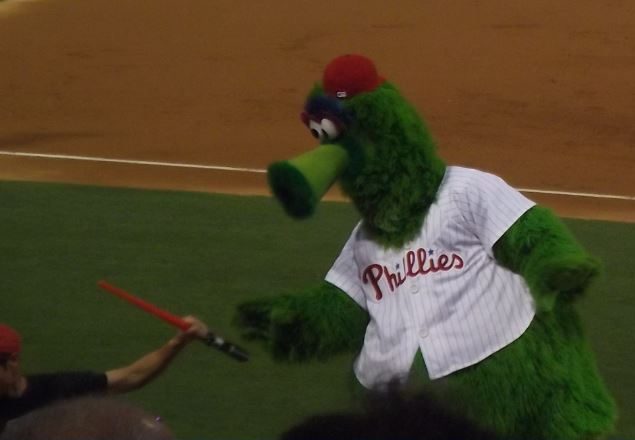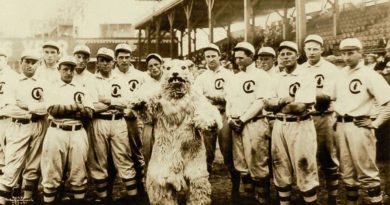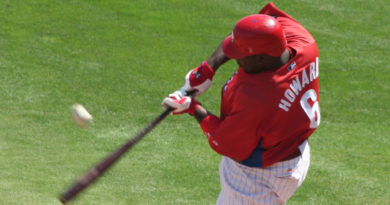An Offensive Failure in Philadelphia
In 2008, the Philadelphia Phillies won their city’s first professional championship in this country’s four major sports since Julius Erving was dunking basketballs 25 years earlier. And then, while virtually every other MLB team was employing someone with experience in advanced statistical analysis, the Phillies’ front office stubbornly stuck with old school thinking that laid the groundwork for the team’s current failing condition.
When the Phillies won that World Series, 29-year old second baseman, Chase Utley, led the roster in WAR with 9, while getting paid a relatively low salary of less than $7.8M. But general manager, Ruben Amaro, Jr., saw the gaudy numbers his first baseman, Ryan Howard had posted that season: 48 home runs and 146 RBI. What Amaro failed to comprehend was that Howard had only contributed 1.8 WAR in 2008. He was a liability in the field and, despite his big power numbers, had an OPS+ that was 11 points lower than Utley and roughly the same as outfielders, Pat Burrell and Jayson Werth.
So what did Amaro do after the 2008 season? He signed Howard to a three-year, $54 million contract. During the first year of that contract, the Phillies’ first baseman posted a WAR of 3.8, which was tied for 51st in all of baseball. His reward? Amaro gave him a five-year, $125 million extension! Never mind that Howard was a.) locked in for two more seasons, b.) coming off a decent, but unspectacular year and c.) entering his age-30 season. Unfortunately for the Phillies, Howard’s 3.8 WAR from 2009 was by far his high-water mark going forward. In 2010, his WAR fell to 1.2 and in the four full seasons since, he has never even topped that modest figure.
While the club was able to continue winning games at a high rate for a couple of more seasons, that success was almost entirely attributable to their high-priced starting rotation. The front office had completely neglected their position players. In 2011, when they won their most recent division title, pitchers Roy Halladay, Cliff Lee, Cole Hamels and Roy Oswalt combined for over 26 WAR (and over $56 million in salary); their entire offense combined for 16.7 WAR that year (their third straight season of decline, down from 29.1 in 2008). Their offense had only three players making at least $10 million that season: Howard, Utley and 39-year old Raul Ibanez, who perhaps predictably to most observers, posted a WAR of -2 that year.
Eventually, Halladay retired, Oswalt started only 15 more games in his career, Lee’s elbow fell apart, Hamels was traded and Howard, with a combined WAR of -1.8 over the past 3 ½ seasons, is more of a detriment to his team than ever before. Management has left the Phillies with very little talent.
It has gotten so bad for Philadelphia, they are on pace to become the first club to both have an Opening Day payroll in the top ten and finish with the worst record in the entire league since the 1995 Toronto Blue Jays. During spring training earlier this year, Bovada set the team’s expected number of wins at 68.5, which was the lowest in all of baseball. Yet, even that low bar seems like a long shot for the team to reach; at 27-52, the team is currently on pace for only 55 wins this season, which would be the franchise’s lowest in a full season since 1961.
Because the front office continued to value players incorrectly for years, the team’s position players have 0.5 WAR among them this year; so does San Francisco Giants’ starting pitcher, Madison Bumgarner…as a batter. Since the 1981 strike year, only eight teams have finished a season with a collective WAR below one among non-pitchers:
Fewest WAR by a Team’s Position Players, 1982-2014
| Team | Year | Record | WAR |
| Mariners | 1983 | 60-102 | -3.2 |
| Padres | 1993 | 61-101 | -1.1 |
| Marlins | 2003 | 62-100 | -1.1 |
| Marlins | 1993 | 64-98 | 0.0 |
| Expos | 2001 | 68-94 | 0.3 |
| Pirates | 2010 | 57-105 | 0.5 |
| Braves | 1988 | 54-106 | 0.6 |
| Diamondbacks | 2004 | 51-111 | 0.7 |
| Phillies | 2015 | 55-107* | 1.0* |
* Current pace
All teams naturally go through peaks and valleys. Superstars age and draft picks don’t always pan out. But the manner in which the Phillies incorrectly measured Ryan Howard’s worth on the field is a microcosm of a much larger issue for the franchise. The team stubbornly refused to value players using advanced metrics and that error in judgment set the team back considerably more than was necessary.
(photo by Googie Man)



